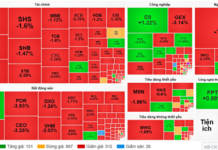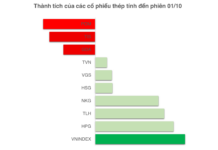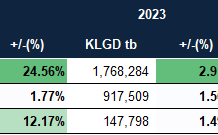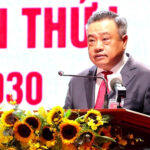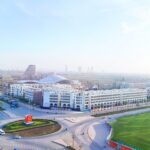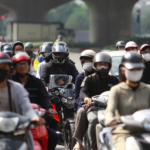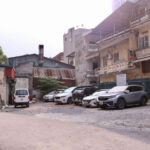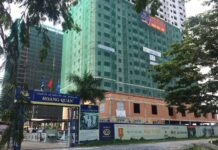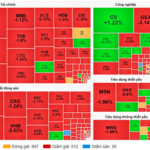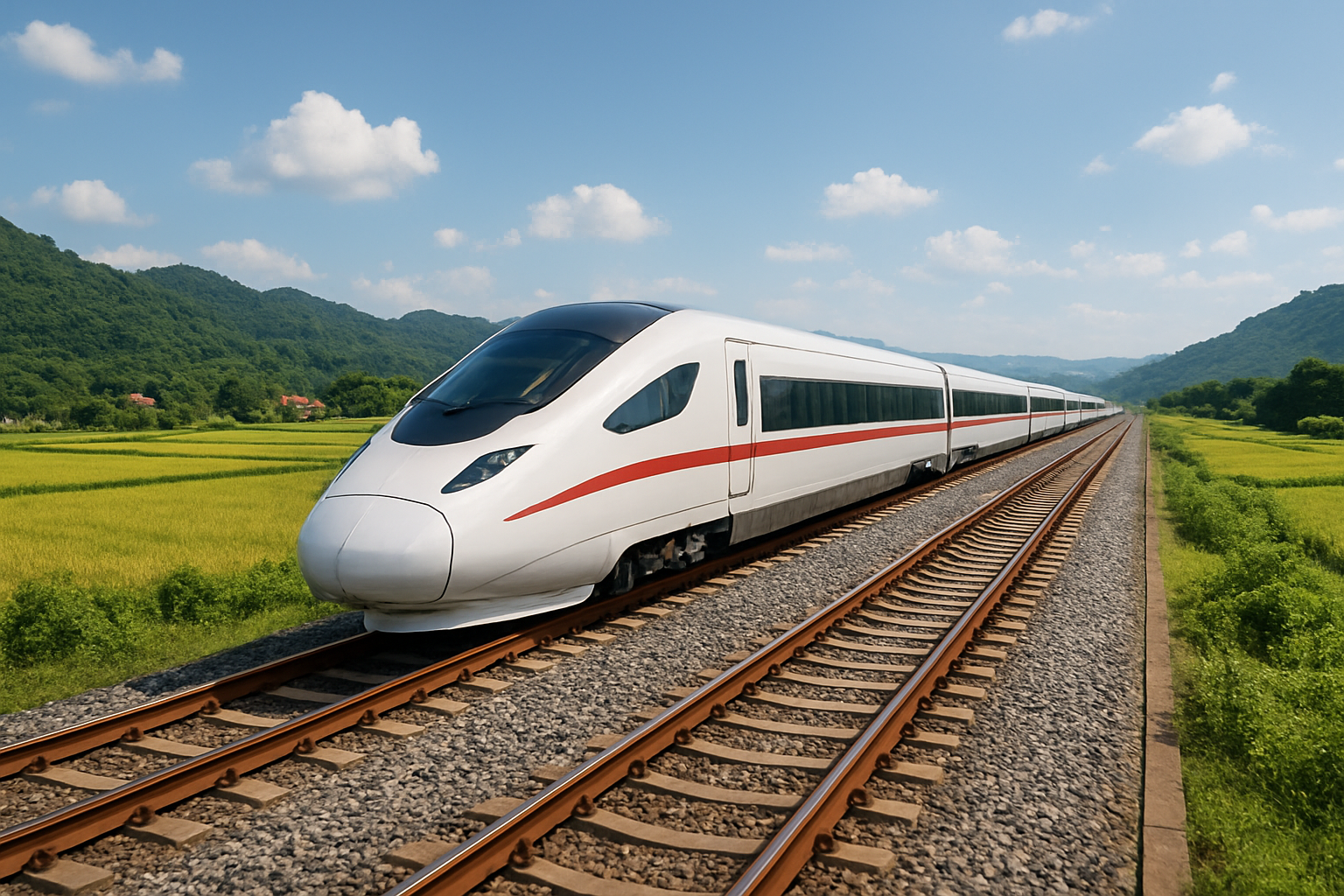
AI-generated image.
The Lao Cai – Hanoi – Hai Phong railway line, spanning 99 km through Phu Tho province, traverses 5 wards and 15 communes: Phong Chau, Phu Tho, Van Phu, Vinh Yen, and Phuc Yen wards, and Dan Thuong, Yen Ky, Ha Hoa, Quang Yen, Dong Thanh, Thanh Ba, Xuan Lung, Phu Ninh, Song Lo, Son Dong, Hoi Thinh, Vinh An, Vinh Hung, Yen Lac, and Binh Nguyen communes.
The starting point of the line in Phu Tho province is located in Dan Thuong commune, while the endpoint falls within Phuc Yen ward.
The railway line will feature 5 stations in the province (including 4 mixed-use stations and 1 passenger station), along with 2 technical operation stations.
Approximately 620 hectares of land will need to be acquired, and over 1,800 households will have to be relocated to facilitate the project. It is anticipated that 36 resettlement areas will be constructed.
Moreover, the construction will require the relocation of nearly 300 locations of power lines and medium and low-voltage transformer stations, as well as around 200 lighting poles.
In addition, numerous infrastructure projects will be impacted, including schools, industrial clusters, urban areas, logistics projects, and water supply and drainage systems.
Currently, provincial authorities are coordinating with the Railway Project Management Board to determine the extent of the impact and formulate appropriate solutions in accordance with regulations. The estimated total cost for compensation, support, and resettlement is expected to exceed VND 12,363 billion.
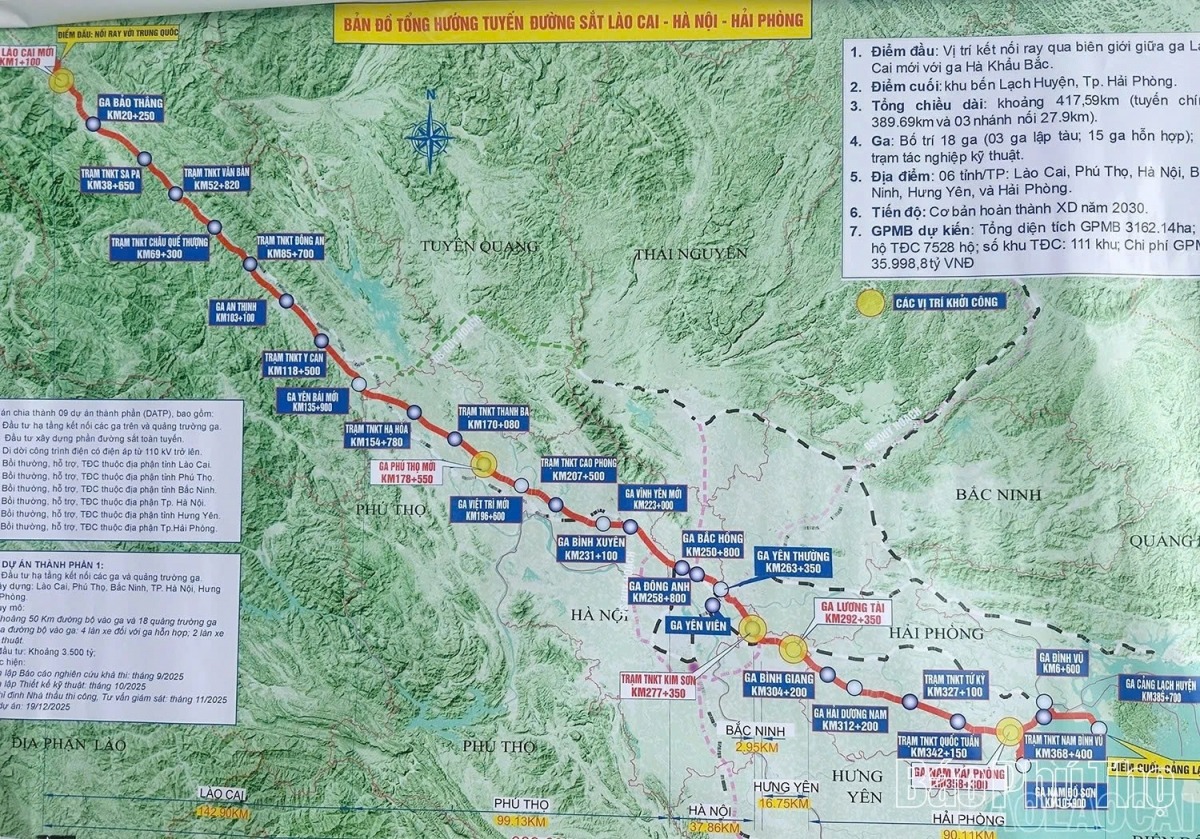
Route map of the Lao Cai – Hanoi – Hai Phong railway line.
The Lao Cai – Hanoi – Hai Phong railway is a key national transportation project, facilitating trade and promoting the development of logistics and industries in the northern midlands and mountainous regions. It serves as a strategic railway link in the Kunming-Hanoi-Hai Phong economic corridor, enhancing connectivity with China.
The Prime Minister has instructed the People’s Committee of Phu Tho province to urgently direct the formulation of compensation, support, and resettlement plans for the entire line within the provincial scope, separate from the general project. This should be done in accordance with the guidance of the Ministries of Construction, Finance, Agriculture and Rural Development, and Natural Resources and Environment. The province is also expected to make thorough preparations for the groundbreaking ceremony of the resettlement area liberation project, scheduled for August 19, 2025.
The People’s Committee of Phu Tho province is coordinating with relevant ministries, sectors, and units to review and formulate plans for the development of stations integrated with logistics centers, inland ports, and urban areas along the railway line. Additionally, they are working on implementing connecting transport routes to maximize the project’s efficiency.
“Hanoi Aims for a Per Capita GDP of $13,000 by 2030”
The 1st Congress of the 2025-2030 term of the Hanoi People’s Committee Party Committee has identified three breakthrough tasks and nine key tasks, with a focus on infrastructure development, digital transformation, and innovation. The city aims to increase its per capita GDP from 7,200 USD in 2025 to 12,000-13,000 USD by 2030.
The Great Hanoi Vehicle Transition: A Comprehensive Review for a Green Future
The Hanoi Department of Construction has proposed that the People’s Committees of 126 wards and communes identify potential locations for electric vehicle charging stations across various land categories.
The 420-Meter Road Project: A Nine-Year Saga of Delays and Unfulfilled Promises
The 420-meter Ring Road 2.5 project, connecting Cau Giay Street to the Dich Vong New Urban Area in Hanoi, has been pending commencement nine years after its approval. Large portions of the project land have turned into dumping grounds for waste and scrap materials, with some areas being used as parking lots.
The Great Hanoi Vehicle Inspection: A Comprehensive Review of Gas and Petrol-Powered Automobiles
The Hanoi authorities have instructed 126 communes and wards to survey and identify potential land plots for the installation of charging stations catering to clean energy vehicles. This initiative involves the comprehensive survey and data collection of the current gasoline, diesel, and electric car and motorbike fleet, facilitating a seamless transition to cleaner transportation options.


